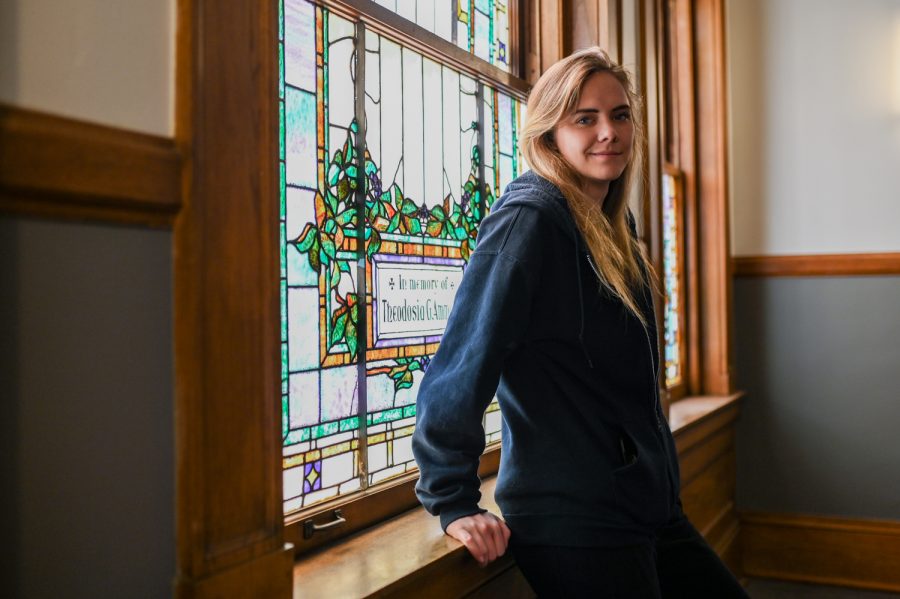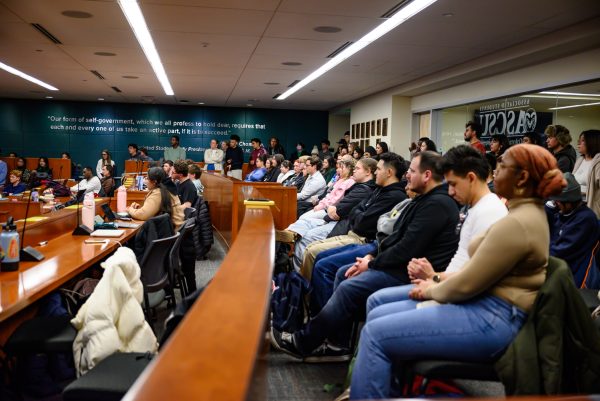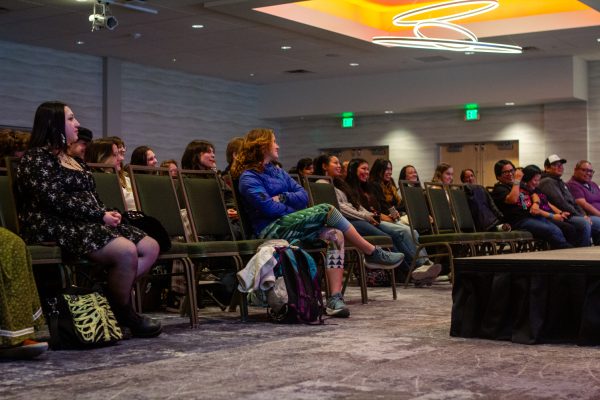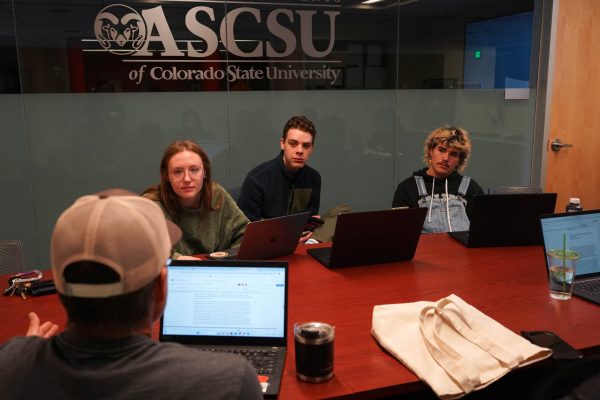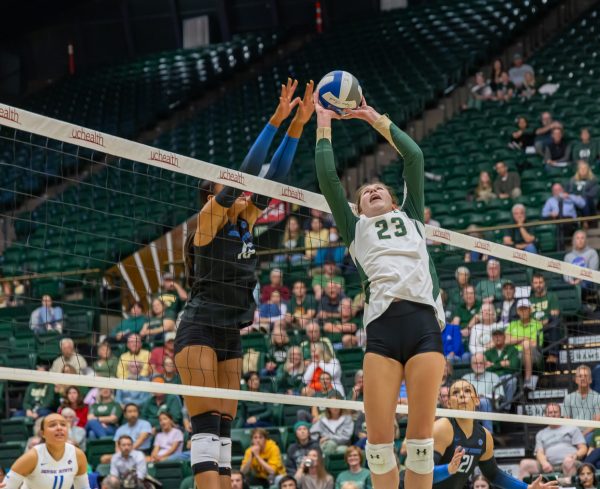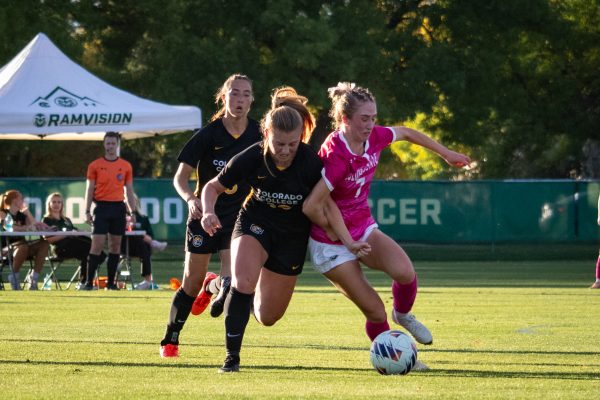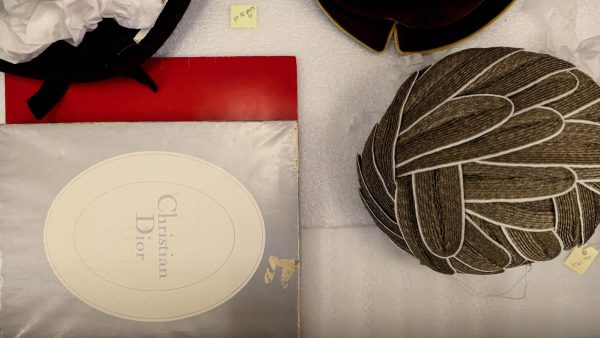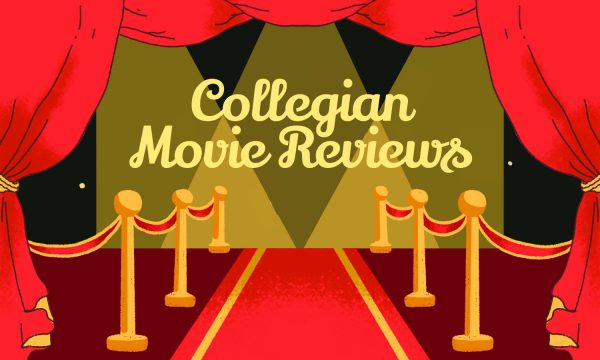Student turns trauma into empowerment through art, advocacy
Collegian | Lucy Morantz
Colorado State University senior Ren Bergeron stands in front of a stained glass window inside of Simon Guggenheim Hall of Household Arts May 2. WATCH WHAT SHE CAN DO is an organization created by Bergeron after her experience with sexual harassment her sophomore year at CSU.
A mural of a woman’s silhouette hangs on a wall in Simon Guggenheim Hall of Household Arts with the inscription “WATCH WHAT SHE CAN DO.”
The woman, who wears a construction hat made out of a protractor, has two purposes: to empower women in male-dominated industries and to show survivors of sexual assault and harassment they are not alone.
For Colorado State University senior Ren Bergeron, art has always been an escape. Now, it’s helped her heal from trauma and given her a path forward paved with empowerment and inspiration.
“I’ve always been an artist,” Bergeron said. “That’s how I communicate trauma and pain and love and everything.”
An interior architecture and design major with a minor in construction management, Bergeron is the artist behind the mural and the founder of the WATCH WHAT SHE CAN DO organization, both of which she created after experiencing sexual harassment on campus in her sophomore year at CSU.
“It was just natural to turn to art after this trauma, and it just made sense,” Bergeron said.
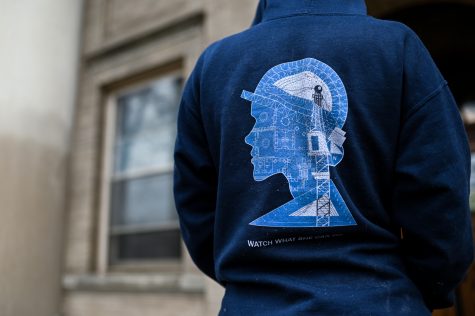
The design she created sparked the idea for the WATCH WHAT SHE CAN DO organization. Bergeron said it was important to her that the design was as universal as possible, “so anyone could see themselves in it,” but also that it specifically said watch what “she” can do, as she wanted to empower women.
“When we’re the ones in power, that’s really where the difference is going to be made.” -Ren Bergeron, CSU interior architecture and design student
A 2019 national study on sexual assault and harassment found “81% of women and 43% of men reported experiencing some form of sexual harassment and/or assault in their lifetime.”
The study, funded by Stop Street Harassment, Promundo, the Center on Gender Equity and Health at the University of California, San Diego and the California Coalition Against Sexual Assault, followed a similar 2018 study driven to show data behind stories from the #MeToo movement.
The study had four categories for types of sexual harassment and assault: verbal sexual harassment, cyber sexual harassment, physically aggressive sexual harassment and sexual assault.
“(In) the case of women, when they’re feeling discouraged … any way that we can help celebrate and strengthen and empower women and the wonderful impacts they’re going to make (is) really important to do.” -Lise Youngblade, CSU College of Health and Human Sciences dean
Verbal sexual harassment, as defined by the study, includes a person making harmful threats, repeatedly asking for dates, talking about another’s body parts in an inappropriate or offensive way and other uses of language deemed inappropriate or unwelcome. Physically aggressive sexual harassment includes someone touching another person in an unwelcome or sexual way or following someone without permission.
Verbal sexual harassment was reported by the most respondents at 56% total (76% of women and 35% of men), with physically aggressive sexual harassment following at 42% total (58% of women and 25% of men).
Bergeron said that after her experience, she wanted someone to say, “You better watch what she can do. You’re underestimating her.”
Through WATCH WHAT SHE CAN DO and her mural, Bergeron wants to communicate to others that they do have the power to make change and speak up.
“I think if we want to actually make a difference, we’re not going to repeat that shit when we’re adults,” Bergeron said. “When we’re the ones in power, that’s really where the difference is going to be made.”
With support from Lise Youngblade, dean of the CSU College of Health and Human Sciences, and Paul Goodrum, construction management department head, Bergeron got approval for her design, which was hung in Guggenheim Hall in June 2021.
“Sharing my story was to help people and to speak out … but more importantly, (to) start to empower women, face my own demons (and) figure out how to move on from that.” –Ren Bergeron, CSU interior architecture and design student
“What we wanted to do was give Ren (Bergeron) a voice that can really inspire others and other women in construction,” Goodrum said.
Goodrum said he sees the artwork as a way to encourage women to continue their careers in construction and also pursue leadership and supervisory roles.
“The industry has a long way to go to try to get anywhere close to gender parity,” Goodrum said. “Anything that we can do here at the University to start these important conversations … I think is a wonderful thing.”
After the design went up, Bergeron said Goodrum told her “a lot of women were really struck by the design” and wanted it on shirts and other items. She then reached out to women in the construction industry for advice on starting the organization.
Bergeron called WATCH WHAT SHE CAN DO an “ode to women,” and the organization focuses on empowering women in science, technology, engineering, arts and mathematics.
With the organization, Bergeron wants to create scholarships for women in STEAM fields, give speeches to high school students who are interested in those industries and create workshops and networks to help women support each other in fields dominated by men.
“Fundamentally, I want everybody at CSU to know they are welcome here and that they’re contributing; they’re making an impact,” Youngblade said. “(In) the case of women, when they’re feeling discouraged … any way that we can help celebrate and strengthen and empower women and the wonderful impacts they’re going to make (is) really important to do.”
According to the United States Bureau of Labor Statistics, only 11% of the people employed in construction in 2021 were women.
“Once I started pursuing WATCH WHAT SHE CAN DO, it was like I had a purpose,” Bergeron said. “Like the trauma had a purpose, and then it became healing. Sharing my story was to help people and to speak out … but more importantly, (to) start to empower women, face my own demons (and) figure out how to move on from that.”
Reach Serena Bettis at news@collegian.com or on Twitter @serenaroseb.
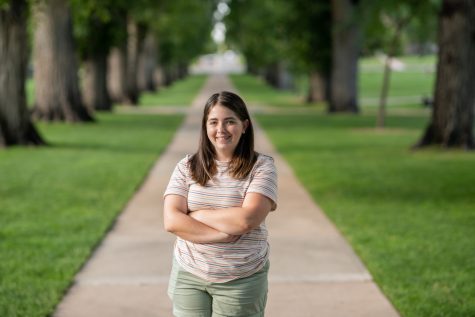
Serena Bettis is your 2022-23 editor in chief and is in her final year studying journalism and political science. In her three years at The Collegian,...

Lucy Morantz is a fourth-year journalism and political science student minoring in legal studies. She is one of the two photo directors for the fall 2022...



